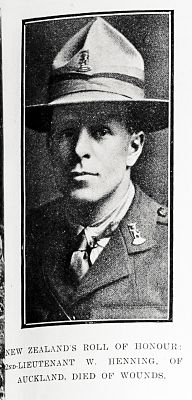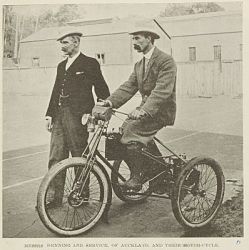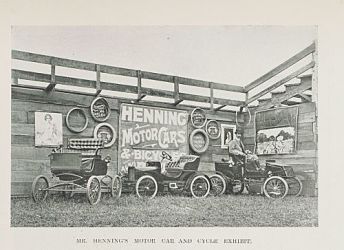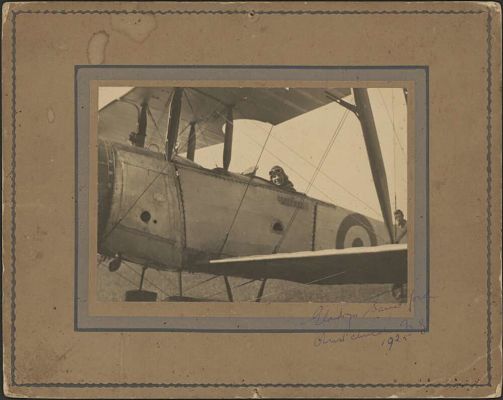WW1 William Henning (Service number 11376)
William Henning was born in Auckland 23 December 1884 to James and Emily Henning, of George (Ohinerau) Street, Remuera, Auckland.
He attended Parnell School, and Mount Roskill School in Auckland. Both William and his older brother George Henning were keen cyclists and members of the Auckland Cycling Club. William was even fined 5/- for cycling illegally on the footpath. [1, 2]
William and his brother George were self-employed motor importers and pioneers in the New Zealand motor car industry. George Henning and W. M. Service were attributed with importing the first motor vehicle into New Zealand to Auckland in November 1895. It was a three-wheeler (motor tricycle) from the Continent, and the cost was £100. (£12,267 or about NZ$23,300 in 2017) [3] William was also interested in aeroplanes and in 1911-12 built a monoplane based on Bleriot’s design at his Customs Street depot – this was at the same time as the Walsh brothers were building their biplane “The Manurewa” at the aero club at Papakura.[4
On 20 June 1912, William married Gladys Coates (1891 – 1971) at St Barnabas Church, Mt Eden, Auckland, by the Reverend McFarland. William Henning enlisted at Trentham on 27 October 1915; he was 5ft 9inches tall, had blue eyes and brown hair. He embarked on 9 June 1916 from Wellington for Suez, Egypt on the vessel ‘Ulimaroa’ as a Sergeant-Major with the 12th Reinforcements, Auckland Infantry Battalion, A Company, New Zealand Expeditionary Force. His wife, Gladys left New Zealand at the same time and offered her services as a motor driver, but was turned down. She joined the Volunteer Sisterhood under Ettie Rout and worked as a hospital orderly and nurses’ helper.
In July 1916, William sailed from Alexandria, Egypt for Southampton, England arriving on 7th August 1916 posted to Sling, England until March 1917 and for a time at Aldershot (August 1916). In April 1917, to be closer to her husband, Gladys moved from Egypt to Hornchurch, Essex, England and became an ambulance driver there, where she was eventually placed in charge of the ambulance depot until 1919, with a rank equivalent to that of 2nd Lieutenant. (See Gladys Sandford (nee Coates, Henning) MBE on the Remuera Heritage WW1 People page.) [5]
In May 1917 William was posted to France where he fought at Passchendaele (October 1917). He returned to England where, for four months from 19 November 1917, he joined No 5 Officer Cadet Squadron at Trinity College, Cambridge. He was promoted to Second Lieutenant. On the 4th April 1918, he was transferred back to A Company and posted to Etaples, in France on the Western Front. The New Zealand Division was fighting in the area near Bapaume, as part of the British 100 days’ offensive against the Germans. William was wounded on 2nd August 1918, but remained on duty.
On 15th August 1918, William Henning was awarded the Military Cross in the field for Conspicuous Gallantry and Resource:
when the enemy had retaken part of the line held by his company he reorganised his platoon and while holding the enemy in front personally led a party round the flank and bombed them out. Not content with this, he captured some 250 yards of new trench and established blocks, holding the enemy at bay until relieved by permanent garrison. Citation from William Henning’s personal files and the London Gazette, 15 October 1918, p12100 Rec No 2218.
On the 16 August 1918, he was wounded again and returned to the unit on 6th September 1918. He was wounded in action yet again on 12th September 1918, was admitted to No 1 New Zealand Field Ambulance and transferred to No 56 Casualty Clearing Station with gunshot wounds. He died of his wounds on 13 September 1918 aged 33.
He is buried at the Grevillers British Cemetery, Pas-de-Calais, France, XIII. B. 13. He is remembered on the memorial plaques at Parnell School and St Aidan’s Church, Remuera.



